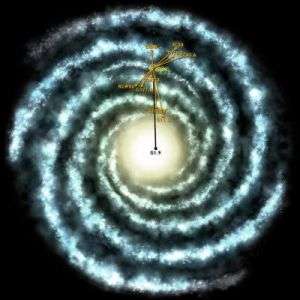Astrophysicists discover youngest known supernova in Milky Way

A North Carolina State University researcher has discovered the youngest known supernova in our galaxy. Estimated at a mere 140 years old, this celestial whippersnapper is at least 200 years younger than the next oldest known supernova, and its discovery may pave the way to a greater understanding of exploding stars.
Dr. Stephen Reynolds, an astrophysicist at NC State, led a team of researchers who suspected that a celestial object known as G1.9+0.3 was a very young supernova remnant. They examined images of the object that were taken in 2007 by NASA’s Chandra X-Ray Observatory and compared these images to those taken of the same object in 1985 by the National Radio Astronomy Observatory’s Very Large Array radio telescope.
Not only did the Chandra images confirm Reynolds’ suspicions that the object was a young supernova remnant, but the scientists discovered that the supernova had increased in size by 16 percent in just 22 years, suggesting that the initial explosion had occurred only 140 years ago – or less if the rate of explosion had been slowing.
The results will appear in the June 10 edition of Astrophysical Journal Letters.
Supernovae are exploding stars, and act as the “engines” that drive the life cycles of galaxies. A supernova explosion disperses heavy metals, cosmic rays, and high-energy particles throughout the galaxy, aiding in the formation of new stars. In fact, a supernova explosion may have helped prod our own solar system into existence.
The brightness of supernovae can easily be obscured from optical telescopes by large amounts of interstellar gas and dust, rendering them all but invisible to astronomers. X-ray and radio telescopes, however, can detect the radio waves and high energy X-rays that supernovae emit, enabling us to “see” even highly obscured explosions.
Reynolds says that the G1.9+0.3 supernova has the largest obscuration of any known galactic supernova object.
“If not for all the interstellar ‘gunk’ between us and this object, people would have seen this supernova as a new star in the constellation Sagittarius in the years around 1870 to 1900,” Reynolds adds.
“Normally, we deal with older remnants and have to work very hard to see even tiny changes. This supernova is getting brighter, which means it's still on its way up — studying it will go a long way toward filling in gaps in our knowledge of these events and their effect on galaxies.”
Source: North Carolina State University





















